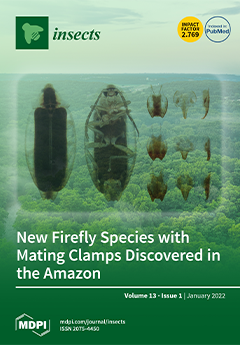Helicoverpa zea, a well-documented and endemic pest throughout most of the Americas, affecting more than 100 species of host plants. It is a quarantine pest according to the Asia and Pacific Plant Protection Commission (APPPC) and the catalog of quarantine pests for plants imported to the People’s Republic of China. Based on 1781 global distribution records of
H. zea and eight bioclimatic variables, the potential geographical distributions (PGDs) of
H. zea were predicted by using a calibrated MaxEnt model. The contribution rate of bioclimatic variables and the jackknife method were integrated to assess the significant variables governing the PGDs. The response curves of bioclimatic variables were quantitatively determined to predict the PGDs of
H. zea under climate change. The results showed that: (1) four out of the eight variables contributed the most to the model performance, namely, mean diurnal range (bio2), precipitation seasonality (bio15), precipitation of the driest quarter (bio17) and precipitation of the warmest quarter (bio18); (2) PGDs of
H. zea under the current climate covered 418.15 × 10
4 km
2, and were large in China; and (3) future climate change will facilitate the expansion of PGDs for
H. zea under shared socioeconomic pathways (SSP) 1-2.6, SSP2-4.5, and SSP5-8.5 in both the 2030s and 2050s. The conversion of unsuitable to low suitability habitat and moderately to high suitability habitat increased by 8.43% and 2.35%, respectively. From the present day to the 2030s, under SSP1-2.6, SSP2-4.5 and SSP5-8.5, the centroid of the suitable habitats of
H. zea showed a general tendency to move eastward; from 2030s to the 2050s, under SSP1-2.6 and SSP5-8.5, it moved southward, and it moved slightly northward under SSP2-4.5. According to bioclimatic conditions,
H. zea has a high capacity for colonization by introduced individuals in China. Customs ports should pay attention to host plants and containers of
H. zea and should exchange information to strengthen plant quarantine and pest monitoring, thus enhancing target management.
Full article






